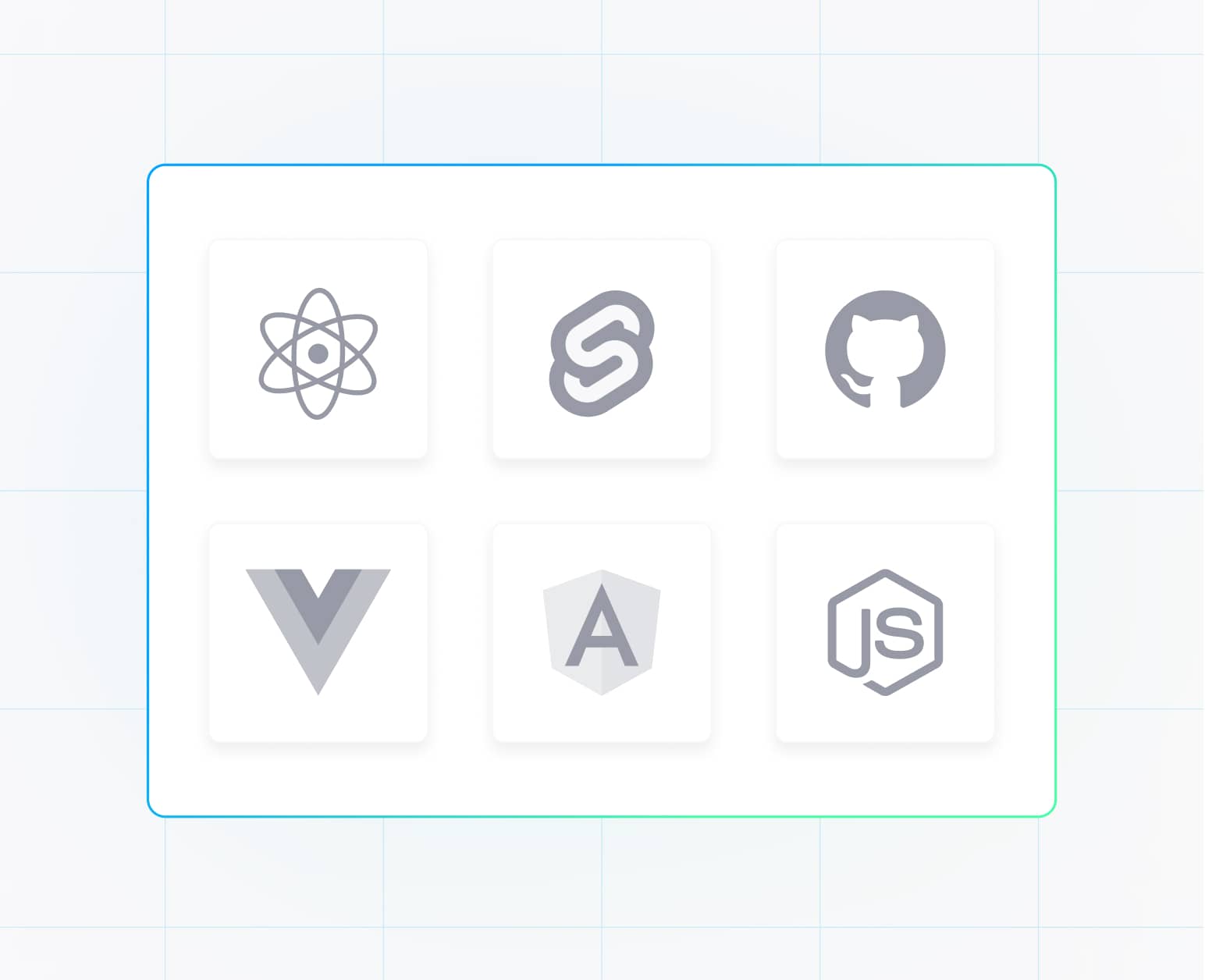
Code refactoring best practices: when its time ( and when its not ) to do it

Code Refactoring Best Practices: When It's Time (and When It's Not) to Do It
Code refactoring is one of the most critical yet often misunderstood practices in software development. As codebases grow and evolve, the question isn't whether you should refactor—it's when and how to do it effectively. At Microservice Solutions GmbH, we've seen firsthand how strategic refactoring can transform legacy systems into scalable, maintainable architectures, while poorly timed refactoring can derail entire projects.
This comprehensive guide will help you master the art and science of code refactoring, providing you with actionable frameworks to make informed decisions about when to refactor, when to hold back, and how to execute refactoring initiatives that deliver real business value.
What is Code Refactoring? A Modern Definition
Code refactoring is the disciplined practice of improving code structure, readability, and maintainability without changing its external behavior or functionality. Think of it as renovating a house—you're improving the foundation, updating the plumbing, and reorganizing the layout while ensuring the house remains fully functional throughout the process.
Modern refactoring goes beyond simple code cleanup. It encompasses:
- Structural improvements: Eliminating code duplication, improving class hierarchy
- Performance optimization: Reducing computational complexity and memory usage
- Architecture evolution: Transitioning from monoliths to microservices
- Security hardening: Implementing secure coding patterns and removing vulnerabilities
- Developer experience enhancement: Making code easier to understand, test, and extend
The Strategic Framework: When to Refactor
Successful refactoring requires strategic thinking. Here's our proven framework for identifying refactoring opportunities:
🎯 Red Flag Indicators: When Refactoring Becomes Critical
1. The "Developer Velocity Wall"
Your team's development speed has significantly decreased, and simple changes now require disproportionate effort. Warning signs include:
- Bug fix time has increased by more than 50% over the past 6 months
- New feature development takes 3x longer than similar features in the past
- Developers spend more time understanding existing code than writing new code
- Test coverage is below 60% and declining
2. The "Technical Debt Interest Rate" is Too High
Technical debt becomes problematic when the "interest payments" (time spent working around poor code) exceed the "principal" (time to fix the underlying issues). Calculate your technical debt ratio:
Technical Debt Ratio = (Remediation Cost) / (Development Cost) × 100
If this ratio exceeds 25%, immediate refactoring is warranted.
3. Code Complexity Metrics Exceed Thresholds
Use these objective metrics to identify refactoring candidates:
- Cyclomatic Complexity: Methods with complexity > 15 need immediate attention
- Lines of Code: Classes > 500 lines or methods > 50 lines should be refactored
- Coupling Metrics: High afferent/efferent coupling indicates architectural issues
- Code Duplication: More than 3% duplicated code requires refactoring
4. Business Impact Signals
Refactoring becomes critical when technical issues start affecting business outcomes:
- Customer-reported bugs have increased by more than 30%
- System performance has degraded noticeably
- Deployment frequency has decreased
- New team member onboarding takes longer than 2 weeks
🟢 Green Light Scenarios: Optimal Refactoring Opportunities
1. Before Major Feature Development
The best time to refactor is right before adding new functionality that would benefit from improved code structure. This approach:
- Reduces the risk of introducing bugs during feature development
- Makes the new feature easier to implement and test
- Provides immediate validation of refactoring benefits
2. During Planned Maintenance Windows
Schedule refactoring during established maintenance periods when:
- You have dedicated time without feature pressure
- The team can focus on quality improvements
- Comprehensive testing can be performed
3. When You Have Comprehensive Test Coverage
Refactoring is safest when you have:
- Unit test coverage above 80%
- Integration tests covering critical user journeys
- Automated regression testing in place
- Performance benchmarks established
When NOT to Refactor: Avoiding Common Pitfalls
Knowing when to avoid refactoring is just as important as knowing when to do it. Here are critical scenarios where refactoring can be counterproductive:
🚫 Red Light Scenarios: When to Hold Back
1. Under Tight Deadlines with High-Stakes Deliverables
Avoid refactoring when:
- You're within 2 weeks of a critical product launch
- The refactoring doesn't directly support the current sprint goals
- External dependencies or client commitments are at risk
- The team is already under significant stress
"The best time to refactor is when you have time to do it right, not when you're rushing to meet a deadline." - Martin Fowler
2. Without Adequate Test Coverage
Refactoring without proper tests is like performing surgery without anesthesia—painful and dangerous. Don't refactor if:
- Test coverage is below 60%
- Critical business logic lacks unit tests
- You don't have automated regression testing
- The existing tests are brittle and unreliable
3. Code That's Working Well and Rarely Changed
If code is:
- Stable and hasn't been modified in over a year
- Performance is acceptable for current needs
- Not blocking new development
- Part of a system scheduled for replacement
Then leave it alone. The risk often outweighs the benefit.
4. When the Team Lacks Domain Knowledge
Refactoring requires deep understanding of:
- Business logic and requirements
- System architecture and dependencies
- Historical context and design decisions
- Customer impact and usage patterns
Best Practices for Effective Code Refactoring
🏗️ The Incremental Approach: Refactoring in Small Steps
The most successful refactoring projects follow an incremental approach:
1. The "Strangler Fig" Pattern
Gradually replace old code with new implementations:
- Identify clear boundaries in your existing system
- Build new functionality alongside old code
- Gradually migrate traffic to the new implementation
- Remove old code once the new system is stable
2. Feature Flags for Safe Refactoring
Use feature flags to:
- Test refactored code in production with limited traffic
- Quickly rollback if issues arise
- Compare performance between old and new implementations
- Gradually increase traffic to new code
🔍 Essential Refactoring Techniques
1. Extract Method Refactoring
Break down large methods into smaller, focused functions:
// Before refactoring
public void ProcessOrder(Order order) {
// Validate order (15 lines)
// Calculate totals (20 lines)
// Apply discounts (25 lines)
// Update inventory (10 lines)
// Send confirmation (8 lines)
}
// After refactoring
public void ProcessOrder(Order order) {
ValidateOrder(order);
CalculateTotals(order);
ApplyDiscounts(order);
UpdateInventory(order);
SendConfirmation(order);
}2. Eliminate Code Duplication
Apply the DRY (Don't Repeat Yourself) principle systematically:
- Extract common functionality into shared utilities
- Create base classes for common behavior
- Use composition over inheritance where appropriate
- Implement design patterns like Strategy or Template Method
3. Improve Naming and Documentation
Clear, descriptive names eliminate the need for comments:
// Poor naming
int d; // days
User u = GetUser(id);
// Better naming
int daysSinceLastLogin;
User currentUser = GetUserById(userId);🛡️ Safety Measures and Risk Mitigation
1. Comprehensive Backup Strategy
- Create feature branches for all refactoring work
- Tag stable versions before starting refactoring
- Maintain rollback plans for each refactoring phase
- Document all changes with clear commit messages
2. Automated Testing Pipeline
- Run full test suite before and after each change
- Implement performance regression testing
- Use static code analysis to catch potential issues
- Set up continuous integration to catch problems early
Measuring Refactoring Success: Key Metrics to Track
Successful refactoring should deliver measurable improvements. Track these metrics:
📊 Code Quality Metrics
- Cyclomatic Complexity: Target reduction of 20-30%
- Code Duplication: Aim for less than 3%
- Test Coverage: Increase to 80%+ during refactoring
- Code Churn: Lines modified per commit should decrease
⚡ Performance Metrics
- Response Time: Monitor API and page load times
- Memory Usage: Track heap utilization and garbage collection
- CPU Utilization: Measure processor efficiency
- Database Query Performance: Optimize N+1 queries and indexes
👥 Developer Experience Metrics
- Build Time: Target 50% reduction in compilation time
- Deployment Frequency: Increase release cadence
- Bug Resolution Time: Faster identification and fixes
- Developer Satisfaction: Survey team regularly
Advanced Refactoring Strategies for Modern Applications
🏛️ Architectural Refactoring Patterns
1. Monolith to Microservices Migration
Our systematic approach to breaking down monoliths:
- Domain Analysis: Identify bounded contexts using Domain-Driven Design
- Data Separation: Extract databases before extracting services
- API-First Design: Define clear service contracts
- Gradual Migration: Move one business capability at a time
2. Legacy System Modernization
Transform outdated systems while maintaining business continuity:
- API Wrapper Pattern: Expose legacy functionality through modern APIs
- Database Modernization: Migrate from legacy databases to cloud-native solutions
- UI Modernization: Replace desktop applications with web interfaces
- Integration Layer: Build middleware to connect old and new systems
🔧 Tool-Assisted Refactoring
Modern Refactoring Tools and IDEs
- Visual Studio Code: Built-in refactoring for multiple languages
- JetBrains IntelliJ: Advanced refactoring capabilities for Java/Kotlin
- Visual Studio: Comprehensive C#/.NET refactoring tools
- SonarQube: Automated code quality analysis
AI-Powered Refactoring
Leverage AI tools for intelligent refactoring:
- GitHub Copilot: AI-assisted code suggestions
- DeepCode: AI-powered code analysis
- CodeGuru: Amazon's machine learning code reviewer
Case Study: Successful Refactoring at Scale
🏢 Enterprise E-commerce Platform Transformation
Challenge: A legacy e-commerce platform with 500,000+ lines of code, serving 10M+ users, experiencing 40% increase in bug reports and 60% slower development velocity.
Our Approach:
- Assessment Phase (2 weeks): Comprehensive code analysis identifying 15 critical refactoring areas
- Incremental Refactoring (6 months): Tackled high-impact, low-risk areas first
- Architecture Evolution (4 months): Extracted 8 microservices from the monolith
- Testing & Validation (2 months): Implemented comprehensive test suite
Results:
- ✅ 45% reduction in bug reports
- ✅ 70% faster feature development
- ✅ 90% improvement in deployment frequency
- ✅ 50% reduction in technical debt ratio
- ✅ 95% developer satisfaction increase
Common Refactoring Antipatterns to Avoid
❌ The "Big Bang" Refactoring
Attempting to refactor everything at once leads to:
- High risk of introducing bugs
- Difficult to track progress
- Team burnout and frustration
- Extended periods without deliverable value
Solution: Break refactoring into small, manageable chunks with clear deliverables.
❌ Refactoring Without Business Justification
Technical teams sometimes refactor for perfectionism rather than business value.
Solution: Always tie refactoring efforts to measurable business outcomes.
❌ Ignoring Stakeholder Communication
Failing to communicate refactoring benefits to non-technical stakeholders.
Solution: Translate technical improvements into business language (faster features, fewer bugs, reduced costs).
Building a Refactoring Culture
🌱 Establishing Refactoring as a Standard Practice
1. Make Refactoring Part of Definition of Done
- Include code quality checks in pull request templates
- Require refactoring considerations for all new features
- Set aside 20% of sprint capacity for technical improvements
2. Continuous Improvement Mindset
- Regular "refactoring retrospectives" to identify opportunities
- Celebrate refactoring successes and share learnings
- Invest in team training on modern refactoring techniques
3. Leadership Buy-in and Support
- Demonstrate ROI of refactoring through metrics
- Align refactoring efforts with business objectives
- Provide dedicated time and resources for quality improvements
The Future of Code Refactoring
🚀 Emerging Trends and Technologies
The refactoring landscape is evolving rapidly with new tools and approaches:
AI-Assisted Refactoring
- Machine learning models that suggest optimal refactoring strategies
- Automated detection of code smells and antipatterns
- Intelligent code generation and optimization
Cloud-Native Refactoring
- Serverless architecture migrations
- Container-based modernization strategies
- Edge computing optimizations
Real-time Code Quality Monitoring
- Continuous code quality assessment
- Predictive analytics for technical debt
- Automated refactoring recommendations
Conclusion: Your Refactoring Action Plan
Code refactoring is not just about improving code—it's about enabling your team to move faster, deliver higher quality software, and adapt to changing business requirements. The key to successful refactoring lies in strategic decision-making, incremental improvement, and maintaining focus on business value.
🎯 Your Next Steps:
- Assess Your Current State: Use the metrics and indicators outlined in this guide to evaluate your codebase
- Prioritize High-Impact Areas: Focus on refactoring that will deliver the most significant business value
- Start Small: Begin with low-risk, high-confidence refactoring wins
- Measure and Iterate: Track your progress and adjust your approach based on results
- Build Team Capability: Invest in training and tools to make refactoring a core competency
Remember: successful refactoring is a marathon, not a sprint. By following the practices outlined in this guide, you'll transform your codebase into a strategic asset that accelerates your business growth rather than constraining it.
"The best teams don't just write code—they craft software that evolves gracefully with their business. Refactoring is the practice that makes this evolution possible."
Ready to Transform Your Codebase?
At Microservice Solutions GmbH, we specialize in helping companies navigate complex refactoring challenges and modernize their technical architecture. Our team of experts can assess your current codebase, develop a strategic refactoring roadmap, and guide your team through the transformation process.
Contact us today to schedule a complimentary codebase assessment and discover how strategic refactoring can accelerate your development velocity and reduce technical debt.

.png)




